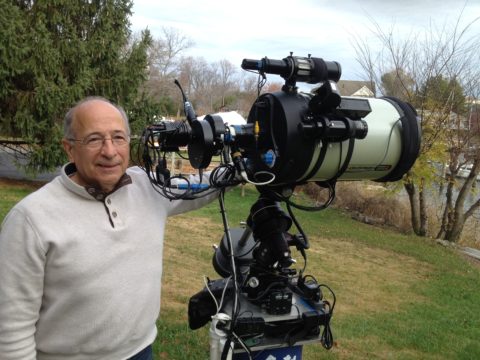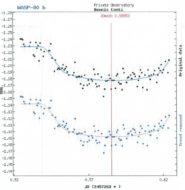Amateur astronomer Dennis Conti has won the Chambliss Amateur Achievement Award for his work on exoplanet hunts.
Earlier this year at its 235th meeting in Honolulu, Hawai‘i, the American Astronomical Society (AAS) conferred the Chambliss Amateur Achievement Award to Dennis Conti for “his outstanding observational, computational, and educational contributions to exoplanet studies.”

One of the most significant missions to date for exoplanet research is NASA’s Transiting Exoplanet Survey Satellite (TESS), which searches primarily for planets smaller than Neptune by looking for periodic dips in stars' brightness. Since the satellite began operations in July 2018, almost 1,700 exoplanet candidates have been identified. But only a few dozen of these have been confirmed so far — the rest await follow-up observations from ground-based telescopes.
That's where amateurs come in.
Conti, a professional computer scientist and amateur astronomer, has been heavily involved with the exoplanet community since 2016, when Drake Deming (University of Maryland) asked Conti to coordinate a worldwide network of amateur astronomers. This network was to provide ground-based observations in conjunction with a one-year Hubble Space Telescope program dedicated to searching for infrared signatures of water in the atmospheres of 15 confirmed exoplanets.
Following that, Conti worked with the Kilodegree Extremely Little Telescope (KELT) project, a survey that uses two robotic telescopes to observe tens of thousands of stars each night searching for exoplanets. More recently, Conti was placed at the helm of TESS's time-series photometry AAVSO subgroup, with its team of dedicated amateurs, where he continues his research to this day.

Conti has not only performed observations himself, but as the founder and chair of the Exoplanet Section of the American Association of Variable Star Observers (AAVSO), he has also trained and mentored other observers. Among other endeavors, Conti put together an online course on the “best practices” of exoplanet observing. To date, more than 150 AAVSO members have taken the course, with many becoming integral members of TESS's team of follow-up observers.
In his capacity as chair of AAVSO's Exoplanet Section, Conti oversees members across the globe, from North America to Europe to Australia. They all have access to the TESS Transit Finder, an online tool that alerts observers to suitable and accessible TESS for their specific locations. Following successful observing runs, members can then upload their data to the pertinent NASA data-collecting websites.
Among the many projects under Conti’s belt is the development of a tool that identifies nearby eclipsing binaries. Since these binaries can mimic exoplanet transits, it’s vital that they're identified, so the focus can remain on searching for exoplanet signals. Conti’s tool is used in the early steps of the TESS object identification pipeline. It can identify these “false positives” in a matter of minutes as compared to an hour or so, thus speeding up the efficiency significantly.

NASA's Goddard Space Flight Center
The most thrilling discovery that his TESS-related work contributed to, Conti says, is "the discovery and validation of the TOI-700 triple-planet system that includes the first habitable zone Earth-sized planet identified by TESS."
Congratulations, Dennis Conti! And keep up the sterling work.
 0
0









Comments
You must be logged in to post a comment.